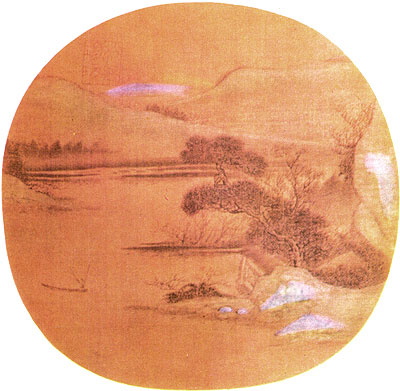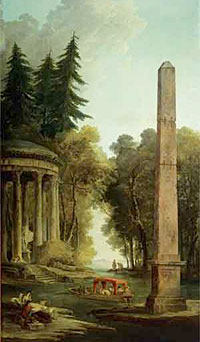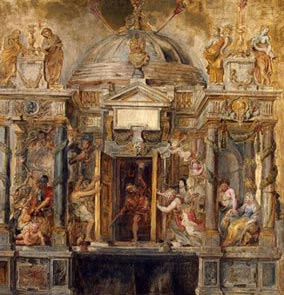Sculpture
 Sculpture (Latin sculptura, from sculpo – I carve, cut), sculpture, plastic (Greek plastike, from plasso – I mold), a type of fine art based on the principle of three-dimensional, physically three-dimensional image of the subject. There was a sculpture in the primitive era, this is evidenced by the results of archaeological excavations carried out in different countries. The sculpture of the primitive period often served as a means of decorating utensils, tools and hunting tools, and was used as amulets. Developing, the sculpture acquired new functions and attitudes towards itself.
Sculpture (Latin sculptura, from sculpo – I carve, cut), sculpture, plastic (Greek plastike, from plasso – I mold), a type of fine art based on the principle of three-dimensional, physically three-dimensional image of the subject. There was a sculpture in the primitive era, this is evidenced by the results of archaeological excavations carried out in different countries. The sculpture of the primitive period often served as a means of decorating utensils, tools and hunting tools, and was used as amulets. Developing, the sculpture acquired new functions and attitudes towards itself.
The object of the image in sculpture is mainly – a man, less often – animals, even less often – nature and things. The conceptual idea in sculpture is transmitted by the author using expressive means, such as, for example, setting a figure in space, transmitting its movement, choosing proportions.
There are two main types of sculpture: a round sculpture, which is freely placed in space, and a relief, where the image is located on the plane forming its background. Round sculpture includes: a statue (a full-length figure), a group (two or more figures that make up a single whole), a statuette (a figure, much smaller in size), a torso (image of a human body), a bust (chest image of a person), etc. The forms of relief vary depending on its purpose and position on the architectural plane (frieze, gable composition, ceiling, etc.). The height and depth of the image reliefs are divided into low-bas-relief, high-high relief, in-depth and kontrellefy.
In terms of content and functions, the sculpture is divided into monumental-decorative, easel and so-called sculpture of small forms.
Monumental and decorative sculpture is designed for a specific architectural and spatial or natural environment. It is located primarily in public places – on the streets and squares of the city, in parks, on the facades and in the interiors of public buildings.
Easel sculpture, not directly related to architecture, has a more “homemade” character. The halls of exhibitions, museums, residential interiors, where it can be viewed closely and in detail, are its usual surroundings. Her favorite genres: portrait, genre, nude, animal genre.
The sculpture of small forms is the works intended mainly for residential interior, and in many respects is closely connected with the arts and crafts. Coins, medals and gems also belong to the sculpture of small forms.
Sculpture The choice of sculptural material depends on the purpose and content of the sculpture, and the technique of the sculpture depends on the material itself. Soft substances (clay, wax, plasticine, etc.) are used for modeling; solids (various types of stone, wood, etc.) are processed by carving or carving; substances that can change from a liquid to a solid state (various metals, gypsum, concrete, plastic, etc.) are used to cast sculptures using specially made molds. To create a sculpture in the metal also resorted to electroforming. In its unmelted form, the metal for the sculpture is processed by forging and embossing. To create ceramic sculptures, special types of clay are used, which are usually covered with painted or colored glaze and burned in special kilns.
The process of creating a sculpture can be divided into the following steps:
– modeling (from plasticine or clay) sketch and sketches from life;
– production of a skeleton for a rump sculpture or a shield for the relief (iron rods, wire, nails, wood);
– work on a rotating machine or vertically fortified shield on the model in a given size;
– the transformation of the clay model in the plaster;
– transfer it into a solid material (stone or wood) using a dotting machine and the corresponding processing technology or metal casting, followed by embossing;
– platinirovka or tint sculpture.
Also known are works of sculpture created from solid materials (marble, wood) without first modeling the clay original, made in the technique of “taille directe”, that is, direct cutting.



